$12.50 – $50.00
It’s an honor to be able to present a tea crafted by Master 杨丰 Yang Feng, the designated 传承人 intangible cultural inheritor of Zhenghe White Tea. Through qualifications approved by UNESCO, this is a government assigned torch-bearer position — as a kind of living link to the past, it’s his duty to educate folks on white tea and uphold its heritage.
This means he doesn’t cut corners — he would not and he can’t. In an industry of big finishing ovens, all of his tea are still finished using traditional low heat charcoal baking to slowly seal in the flavor and aroma. He doesn't produce rolled and piled artificially aged whites, only traditional white tea. To us, he’s the antithesis of Fuding’s marketeering and investment money eroding away the traditions of heritage white tea productions.
Yang is the inventor of the style Mu Dan Wang or King Peony, the 1 bud 1 leaf grade between Yin Zhen Silver Needles and Bai Mu Dan White Peony, and he himself is called the Mu Dan Wang!
Good Zhenghe whites tend to initially express in understated ways to then begin to really shine a few steeps in. This tea is a good example of this kind of slow start, as the session starts with a gentle entrance with meadow fragrances, oak, and baked pecans. A nutritive maple character with an apricot and amaretto sweetness reveals itself as the steeps begin to further penetrate the cell walls that will sustain onward. Yang’s teas are very well balanced, clean, and opt for depth of character over immediate showiness and this one is no exception. Towards the end of the session, boiling this tea is common practice, especially as this tea continues to mature into an exceptional naturally aged white.
On April 10th, 2021 Yang Feng's team went up to an area he calls 猴坑 Hou Keng "monkey pit" (not the same that produces Taiping Houkui in Anhui) just a few miles northwest of Jinping village on the provincial border between Zhejiang and Fujian. These mountainous areas are some of the most ideal tea habitats we've seen: crystal clear waters, fresh air, thick bamboo forests, steep mountains, an average of around 1000 meters.
They harvested big leaves from reclaimed old thicket tea trees that once comprised a less unruly tea plantation before allowing them to wither for about 72 hours in their famous wooden breezeway.
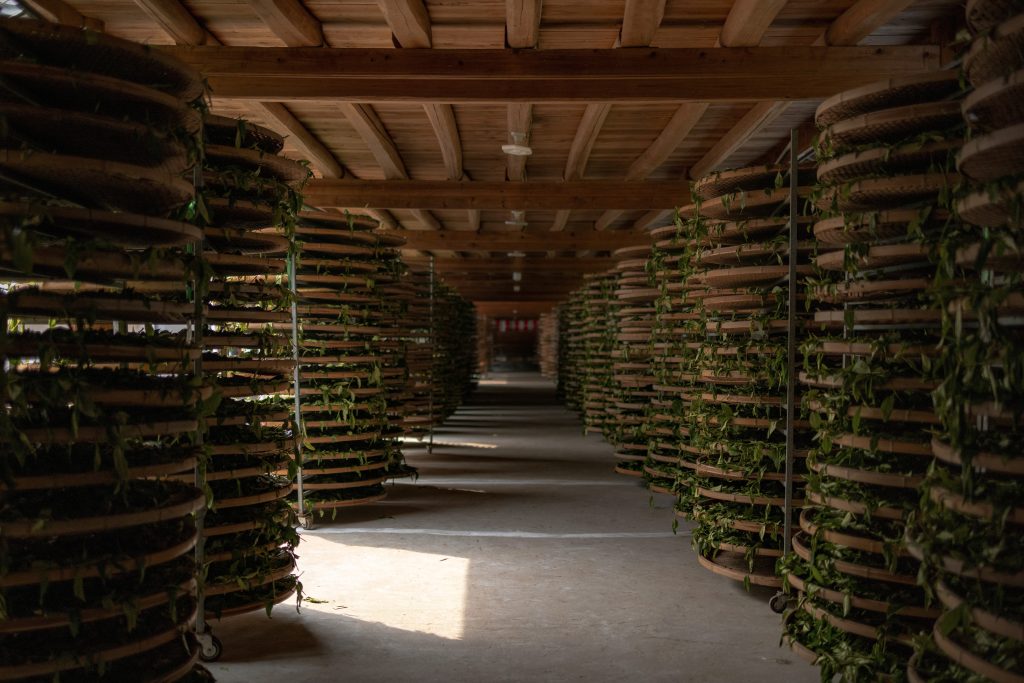
Yang Feng's iconic breezeway used for their 72 hour withering cycle
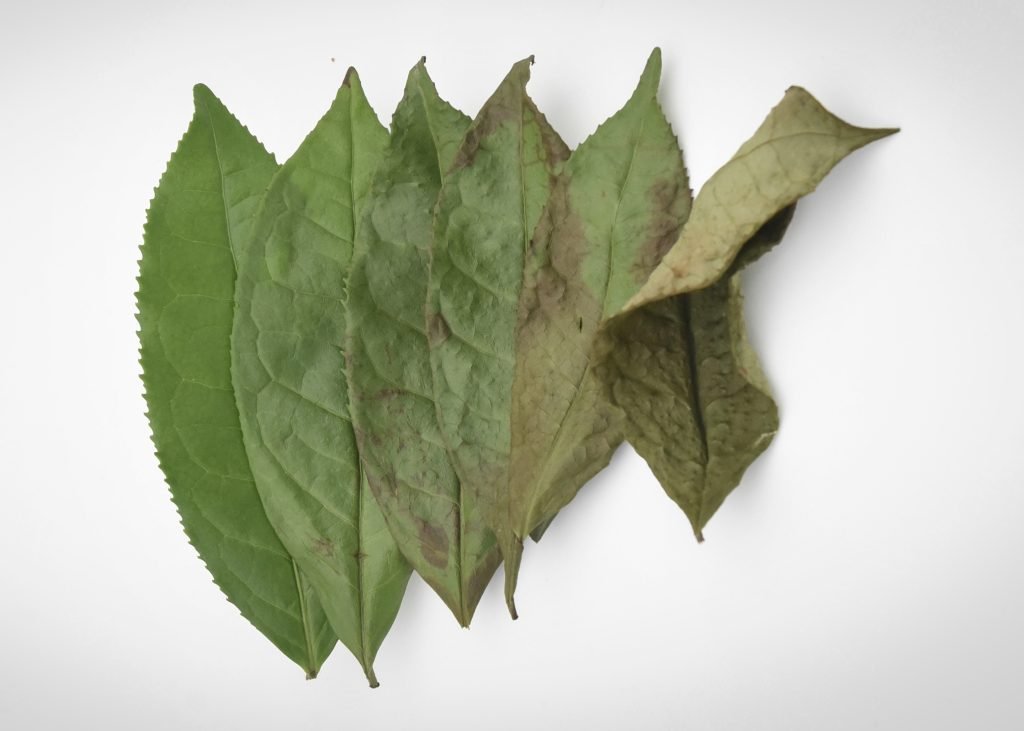
This slow withering cycle defines Zhenghe white tea processing and highlights a slow conversations with the environment — the tea leaves lose moisture during the day, gaining constituents and enzymes during the night. As artificial aging must rupture the cell walls, for naturally aged traditional white teas, a light, unbroken waxiness on the lower leaves will be present throughout its lifecycle
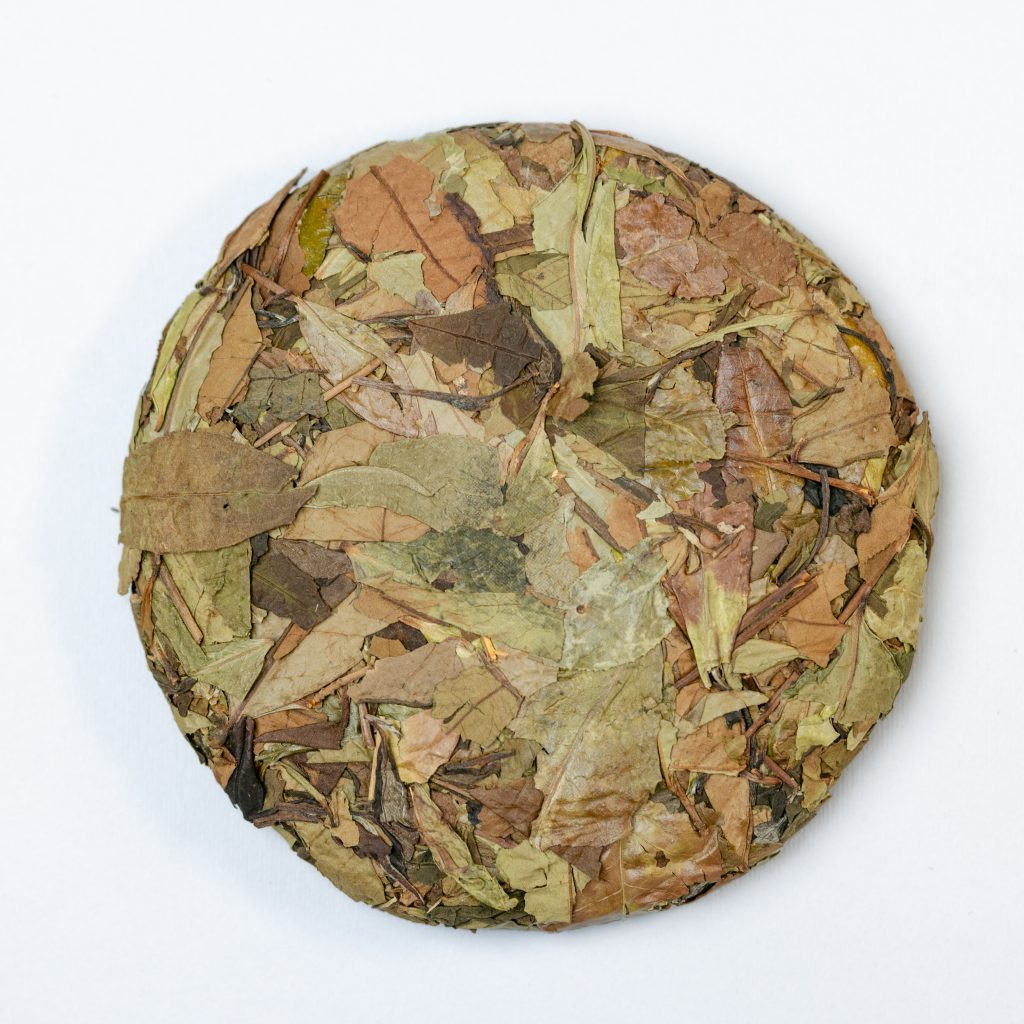
This tea is a true Gong Mei, which now has less to do with the plucking grade bud-to-leaf ratio and is defined by its propagation. Gong Mei can now be thought of as an heirloom varietal synonymous with the preexisting names 土茶 Tu Cha “landrace tea”, 群体种茶 Qunti Zhong Cha “thicket grown tea”, or 菜茶 Cai Cha “vegetable tea”. In short, any tea plant that has escaped cultivation and propagates itself through cross-pollination and natural seed dispersal (as opposed to asexual clonal cutting propagation) can now be recognized by as a Gong Mei. Especially in more matured garden ecologies, it is common for the garden to become feral, with new generations of mixed-cultivar plants escaping into the surrounding habitat. In this new age of reclaiming abandoned tea gardens and selling their tea as 荒野 huang ye Wild, this new categorization aims to simplify the semantics as well as make room for the plucking grade defined expressions of Bai Mu Dan and Shou Mei to be built out further.
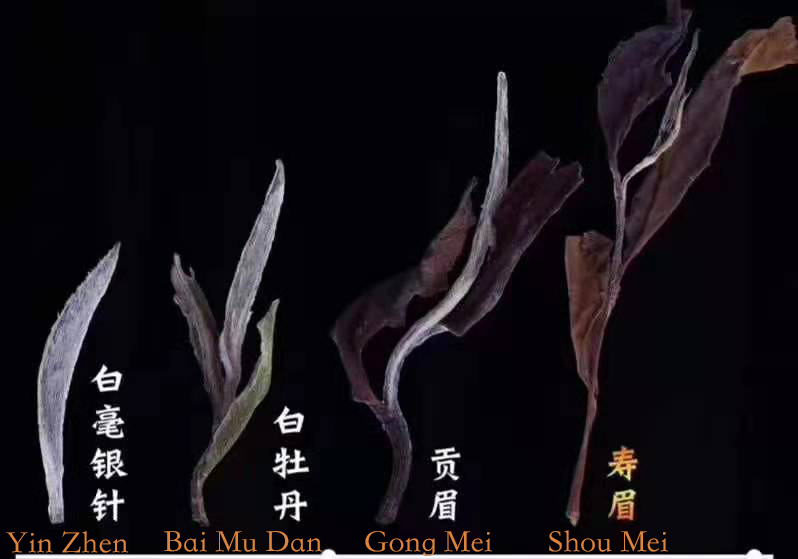
the classic, now defunct plucking grade graph. Gong Mei was recently taken out
As mentioned, Yang Feng and his team still adhere to low temperature charcoal baking to finish their white teas. Suspended in bamboo baskets above ash covered coals at just 60°C (140°F), this low temperature is roughly half of that commonly used in electric ovens in Fuding. This gentle charcoal baking ensures that the latent enzymes in the dried leaf will produce a rich and continually rewarding transformation as they slowly oxidize.
As it approaches four years of age, in terms of aged white tea, this 2021 Gong Mei is off to a good start. This tea is another acquisition of fine material while it's still available and affordable when relatively young; good for drinking now and sure to beat out the competition if it's allowed to age further.
The tea cake inkwork for this release was penned by our friend Green, a tea friend we met in 2019 during our travels in northern Yunnan. Him and his girlfriend are artists that run a teashop in the small town of Shaxi. Each cake features a drawing of one of his favorite birds in China.
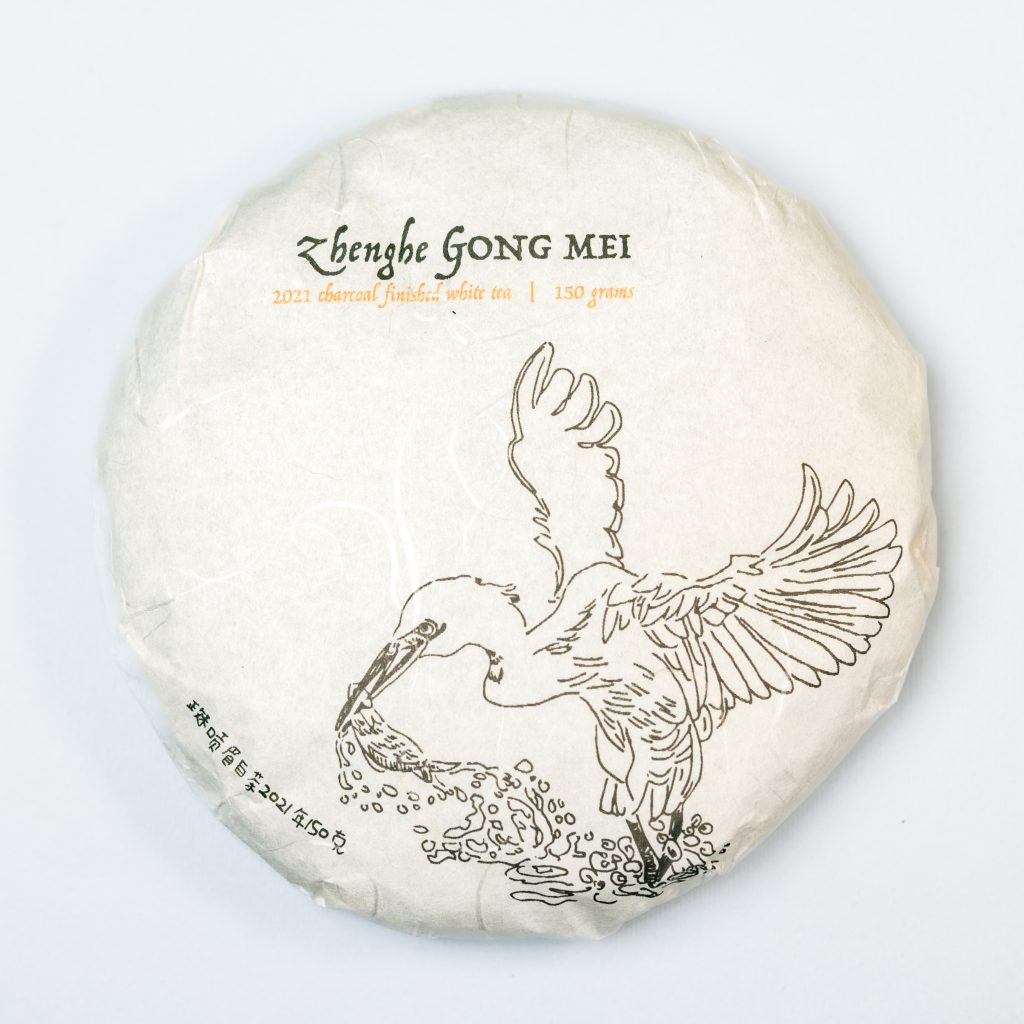
Almost as good as 2021 Feral Gong Mei but not as aromatic.
Warm apple chamomile gently gives way to cooked plums and cedar notes. We are using boiling water and it's standing up to it with no trouble. The qi is gently invigorating...lol...like low-fi trap music.